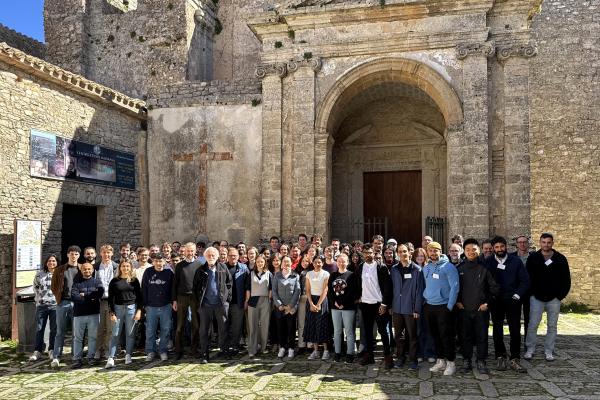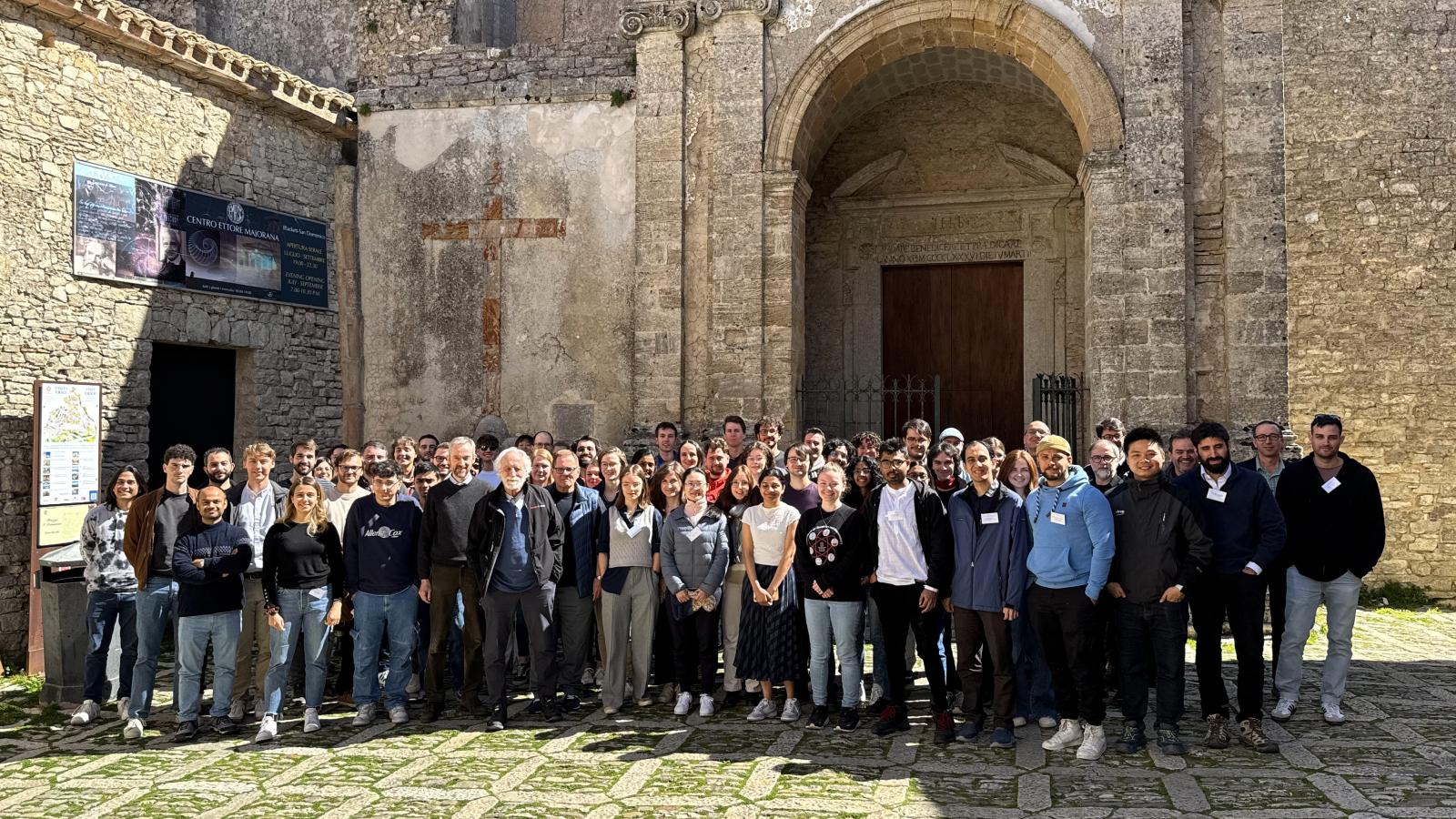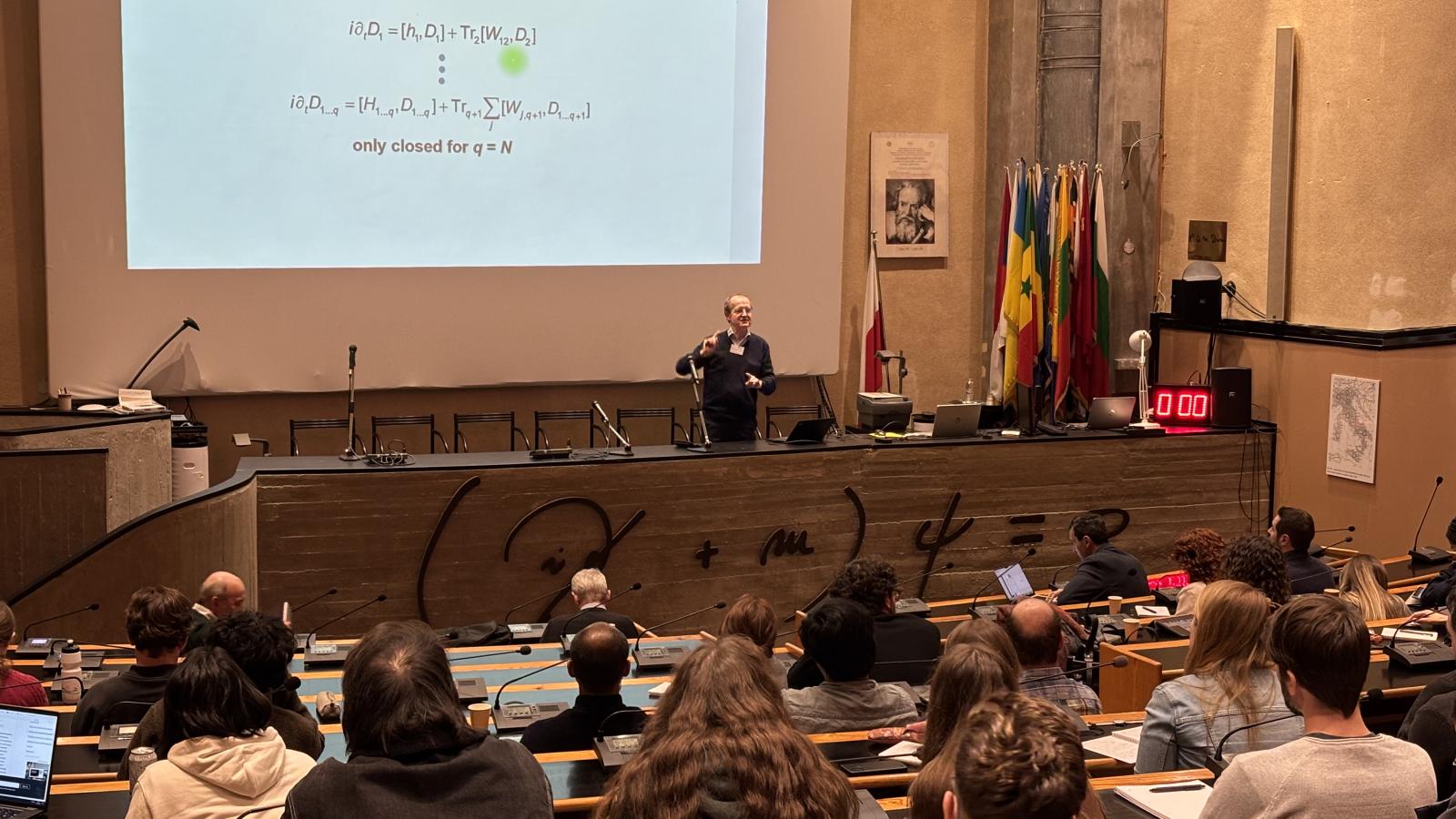Expanding Horizons in Optical Science: IOS Travel Awards Create International Opportunities

Earlier this month, the International School on The Frontiers of Attosecond and Ultrafast X-ray Science was held in Erice, Italy, at the Ettore Majorana Foundation and Centre for Scientific Culture. Organized every two years, this renowned school brings together experts and emerging scholars from around the world to share developments in attosecond physics and ultrafast x-ray science.
The 2025 edition was co-directed by IOS Director Louis DiMauro and Mauro Nisoli (Politecnico di Milano), and organized by the COST Action CA22148 NEXT. This year’s program featured lectures on attosecond pulse generation and applications, free-electron laser technologies, and new approaches to studying electron dynamics in atoms, molecules, and solids. Confirmed speakers included leading researchers from institutions across Europe and the U.S., as well as Nobel Laureates Pierre Agostini and Anne L’Huillier.
IOS was proud to provide financial support for student and postdoctoral participation, in collaboration with the Air Force Office of Scientific Research. Thanks to this support, several attendees from U.S. institutions—including students from the Agostini-DiMauro Group—were able to attend to participate.
Allision Lucas, a graduate student in the Agostini-DiMauro Group at The Ohio State University, shares:
“Without the travel award, I wouldn’t have been able to attend the Erice Attosecond School. It allowed me to travel farther than I ever had before and meet students I never would have otherwise. Everything I gained from the experience—from the lectures to the conversations—would likely not have been accessible to me otherwise.”
Subhajit Das, a graduate student in the Baker Group at The Ohio State University, also shared how impactful the training was to his research:
“Coming from an inorganic chemistry background, joining Dr. Baker's group in physical chemistry was a great opportunity for me to learn how we apply optical pump and X-ray ultraviolet probe generated from high harmonic generation. Visiting the Erice school gave me a chance to learn more about the variables or parameters involved in high harmonic generation efficiency. Meeting fellow researchers and students from all over the world helped me understand complex topics in a simpler way. I aim to apply this knowledge, particularly high harmonic generation efficiency parameters, to our lab in order to improve my transient data quality.”
Eric Mullins, a graduate research assistant at Kansas State University, reflected on the collaborative and supportive environment the school fostered:
"I think that was really interesting to see that variety of knowledge across all of the students, and how everyone was able to kind of give insights to where other people might have knowledge lacking, and really kind of share that — so that was really cool."
River Robles, a PhD student at Stanford University, shared how the school provided valuable training that directly supports their ongoing research:
"I had a lot of training in generating attosecond pulses, but none at all in using them to study these systems... Even slightly formal training in these topics is extremely helpful for me as I start to do data analysis on these experiments that previously I did not know what was going on for. So that's really good."
The Institute for Optical Science remains committed to supporting opportunities that strengthen collaboration, broaden access, and inspire the next generation of scientists in ultrafast and optical physics!
What is the Institute for Optical Science?
The Institute for Optical Science is a community of multidisciplinary researchers studying the fundamental properties of light and harnessing these properties in practical applications for significant benefit to society.








